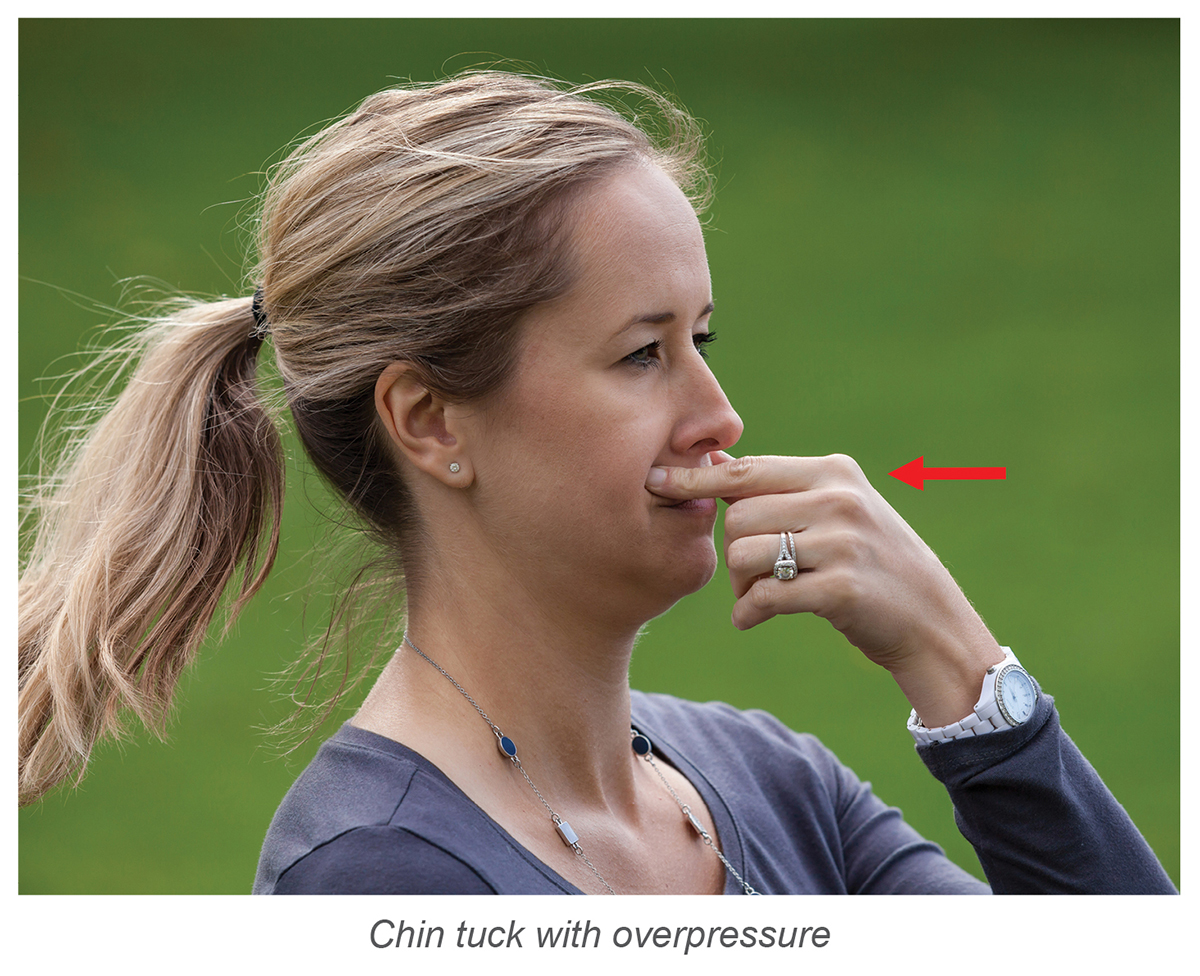Posture Matters for Your Headache Pain!
How many times have you heard that you need to pay attention to your posture? It is true. Poor posture will tighten the muscles that flare up your headaches. As a result of posture correction, your headaches may ease up.
Use a simple technique of the chin tuck to stretch out the muscles that are pulling your head forward. If you have a forward head posture, you will certainly feel the pull of the muscles in the back of your neck. These muscles attach to the upper neck and the back of the head.
Poor Posture Limits Neck Turning
Most of my clients leave the clinic, climb into their car, and find they can turn their neck farther than they could when they arrived. Posture correction changes things!
Try a simple experiment. Where you are sitting right now, first turn your head right and left. Next, let yourself slump further. Then turn your head left and right. . Your neck is certainly more restricted. Finally, straighten up to the best of your ability. You will most likely get a few more degrees neck turning. Correct your posture further, and you can build on that.
Exercise Snacks
Tuck your chin gently but frequently! Avoid marathon sessions! These postural neck muscles, called the occipital muscles, are quite sensitive. Therefore, if you push too hard, you can irritate these muscles and cause a worse headache. If these muscles have been tight for a long time, it will take one or two months to restore them to their proper length.
Do not do heavy stretching to these occipital muscles. Decrease the chance for overstraining and delayed onset muscle soreness. Instead, do frequent chin tucks throughout the day. Cervical retraction is the more technical term for chin tuck if you would like to search further.
Gentle Hand Pressure – No Forcible Neck Motion!
First, use your thumb and index finger and place it along the upper row of teeth. Secondly, push back slightly until you feel a slight pull in the back of the neck. Finally, if you like more control, spread your thumb and fingers out. The web space of your thumb and index finger presses the upper jaw with the thumb and fingers resting along the outside of the face.
You can also cradle your jaw itself in the web space between your thumb and index finger which gives you better control of the upper neck position. I tend not to use this method because I see many people who have jaw issues interwoven with their headaches. Too much pressure on the jaw can irritate their temporomandibular dysfunction.
Nod your head slightly up and down to find the position where you feel a gentle stretch to your occipitals. If you keep your pressure on the upper row of teeth you will avoid jaw complications, though this benefit comes with some loss of cradling control that wrapping around the jaw provides.
Sustained Stretch or On and Off Movements?
Most people prefer the pressure on, pressure off technique. To start, push back gently as you breathe out. Then relax your pressure as you breath in. Remember gentle, gentle, gentle. Five to ten repetitions usually will work well for you, repeated many times a day for reinforcement.
If you feel confident that a longer stretch will not overstrain your occipital neck muscles, you may want to try a sustained hold. I would not go longer than 30 seconds maximum.
Your Jaw May Benefit
You may have the annoying problem of jaw clicking when opening your mouth or eating. I test my temporomandibular dysfunction clients for clicking in their normal posture to get a baseline.
After the chin tuck posture correction, clients are frequently surprised to find a decrease in their jaw clicking when they open their mouths again. The changed posture changes the jaw position which decreases the pressure to the structures causing the clicking.
Most of my clients do not get total relief of their clicking with this technique. Indeed, the posture correction may have no effect at all on the clicking. Other muscular and joint structures will effect a change in this case. However, posture correction is part of a total management program for jaw dysfunction as well as for headaches.
Retrain Your Brain – the Mind-Body Connection
Paste sticky pads around your computer screen to remind you to straighten up! Do you slump as you go about your household chores? Place these same sticky notes around your house.
Your brain needs repeated reminders to correct your posture. The natural tendency is to take the easy way out, in life as well as a slumped posture. It takes a dedicated effort to fight against the current and not let it take you downstream.
If your have poor posture and stiff neck muscles now, it will only get worse as you age. As one of my clients said, “You have never been as old as you are right now.” Straighten up your posture, and your headache relief may well follow!
-You understand that if not done properly, some techniques and exercises described in this blog could harm you. Any activities you perform are at your own risk, and you expressly agree to waive any claims against the author for any harm that may arise from your own actions. By reading this blog and conducting these exercises, you accept this risk. This blog provides content related to physical and/or mental health issues. As such, your use of techniques described acts as your acceptance of this disclaimer. Consult Chapter 2 in my book, “Calming the Headache Storm” to make sure the headache is not the sign of a more serious problem. The techniques, advice and strategies contained in this blog may not be suitable for every individual and should be abandoned if your headache increases. Seek the advice of your physician.
